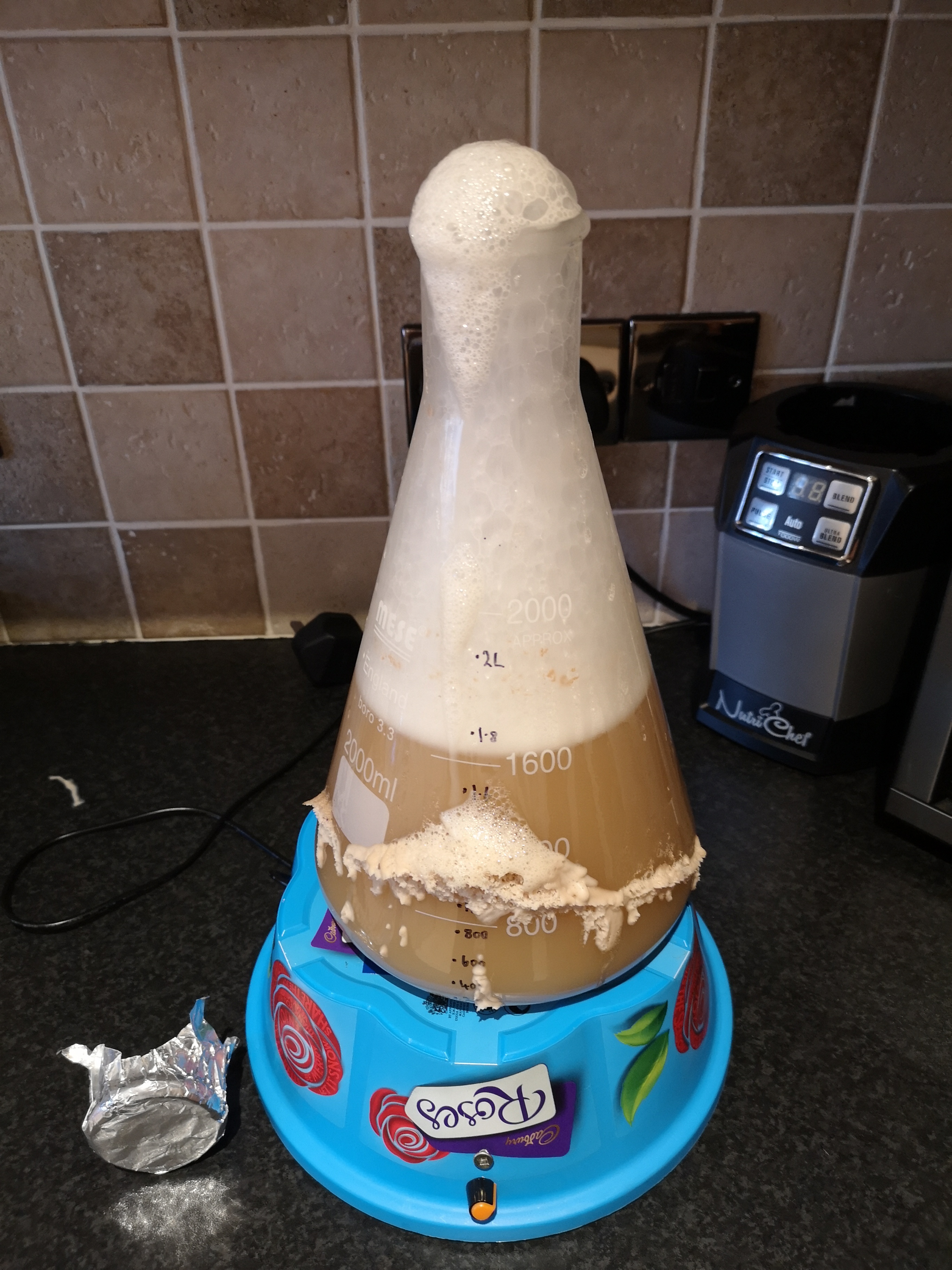Well, it's far too many years since I was in a lab and boiling stuff, but basically the purpose of the metal gauze is to diffuse the heat, so that extreme hot-spots don't develop on the bottom of the flask which could cause rapid expansion of the glass beyond its ability to "stretch", and so crack and destroy the flask. The typical lab set-up would be a bunsen burner underneath a metal tripod supporting a woven-mesh metal "gauze", usually with an asbestos centre ring to further shield the flask from the direct heat source of the single-flame bunsen.
I haven't tried it, but it does seem feasible that a ring-shaped gas burner is already spreading the heat, and so a heat shield might not be necessary. But, if it was my conical flask, than I'd definitely put a heat diffuser under it. Not a gauze nesessarily - you'd want this in the "bunsen" scenario, with a single intense flame, to allow adequate gas flow. But domestic hobs are designed to have wide pans on top of them, and so anything that would spread the heat would be fine - a cast-iron frying pan maybe?
Also, an endorsement for not boiling wort in a conical flask. You tend to get frothing any way you boil wort, so to boil it in a vessel that narrows towards the top will, as Marty suggests, almost certainly result in a very messy boil-over.





 ) then just boil a small amount of water in your pan for a couple of minutes. The pan should now be both sterile (for our purposes), and clean of any lingering food residues. Then boil your wort in your nice clean pan - and providing that your conical flask is of lab quality (and not standing on a block of ice - I'd use a wooden chopping board underneath it to minimise thermal stress), then pour the boiling wort into the flask, pop aluminium foil over the neck (and well down the flask as well - it will draw a significant amount of air back into the flask as it cools), and all should be well
) then just boil a small amount of water in your pan for a couple of minutes. The pan should now be both sterile (for our purposes), and clean of any lingering food residues. Then boil your wort in your nice clean pan - and providing that your conical flask is of lab quality (and not standing on a block of ice - I'd use a wooden chopping board underneath it to minimise thermal stress), then pour the boiling wort into the flask, pop aluminium foil over the neck (and well down the flask as well - it will draw a significant amount of air back into the flask as it cools), and all should be well 
